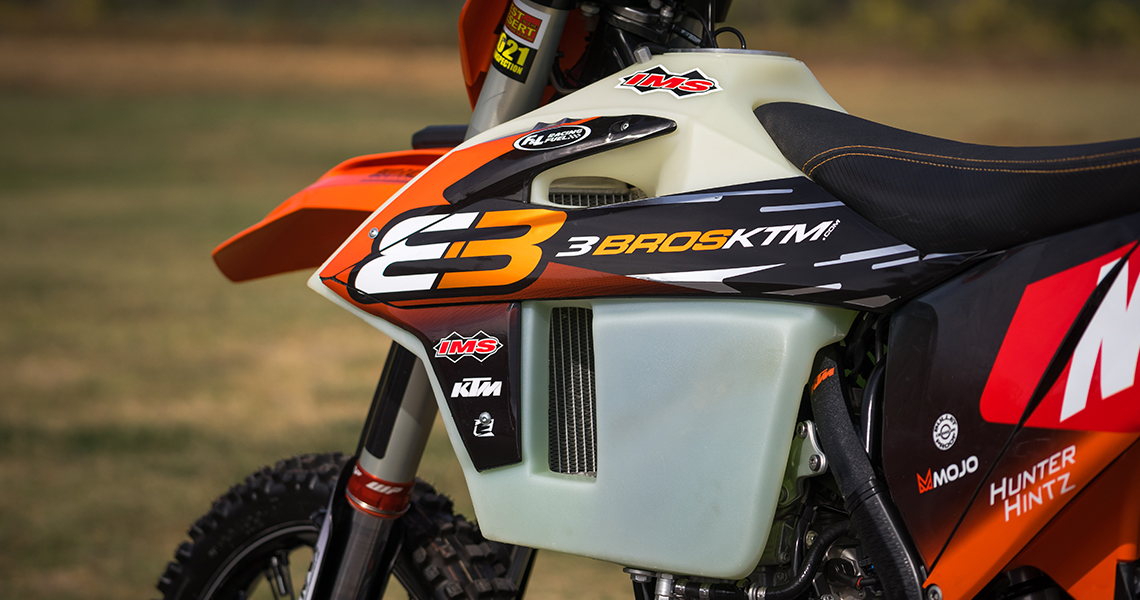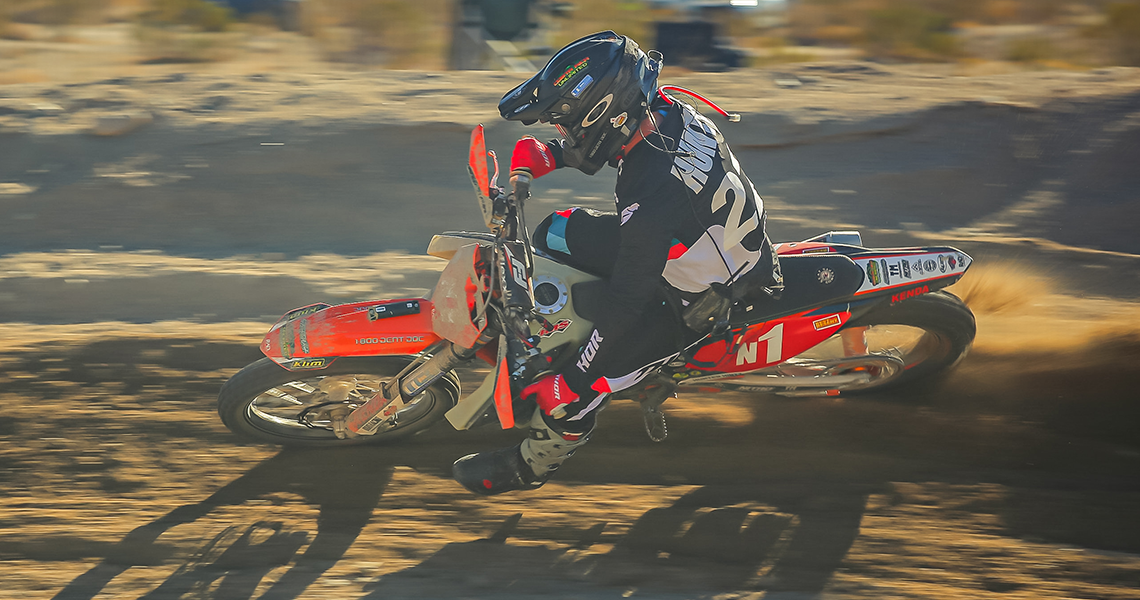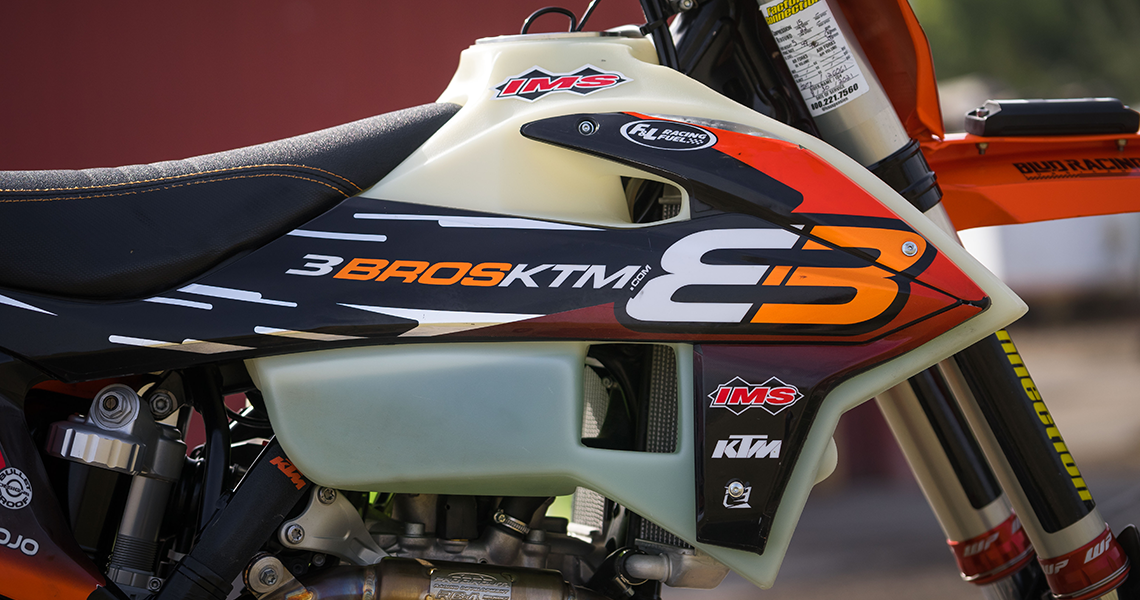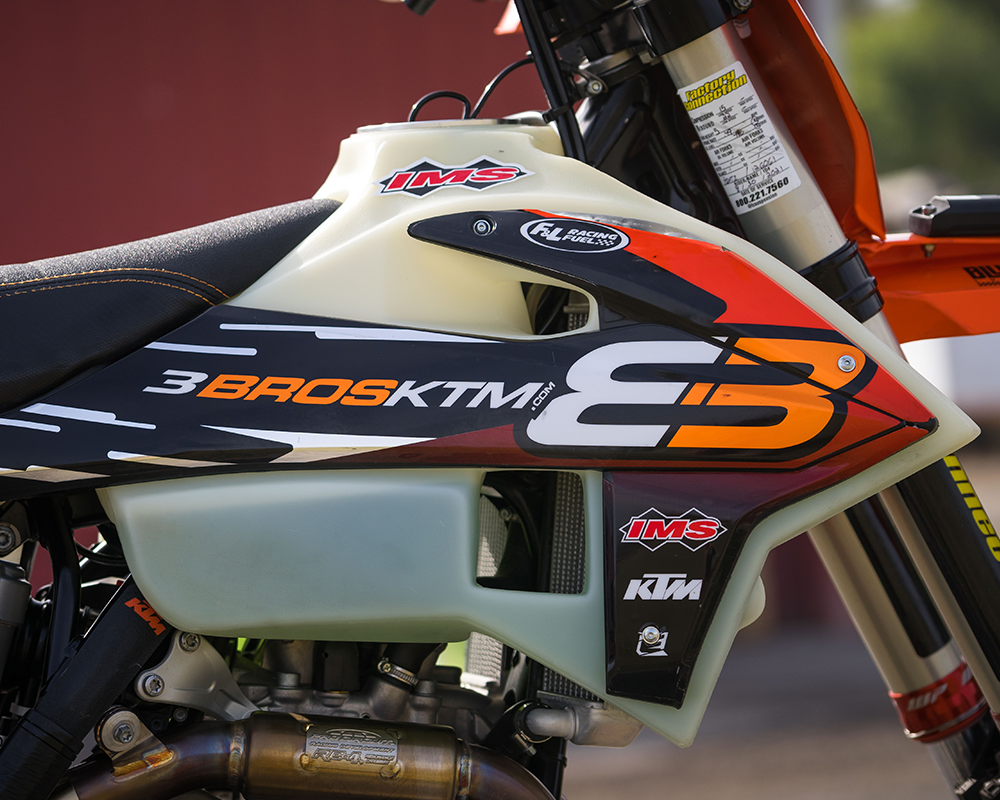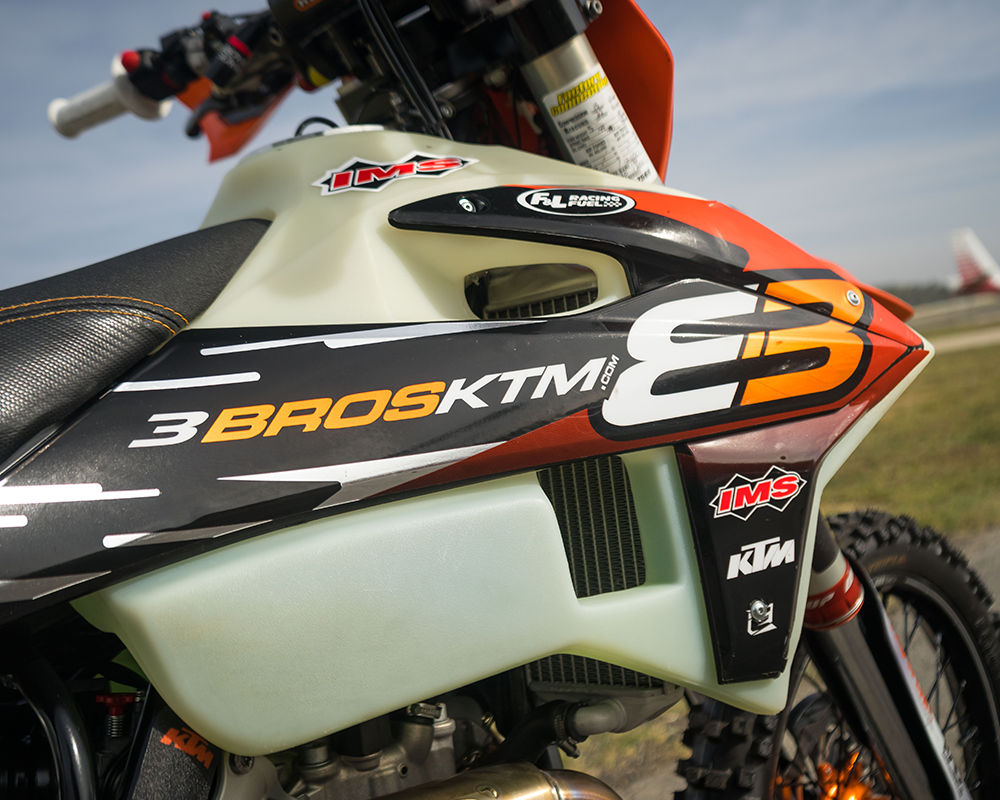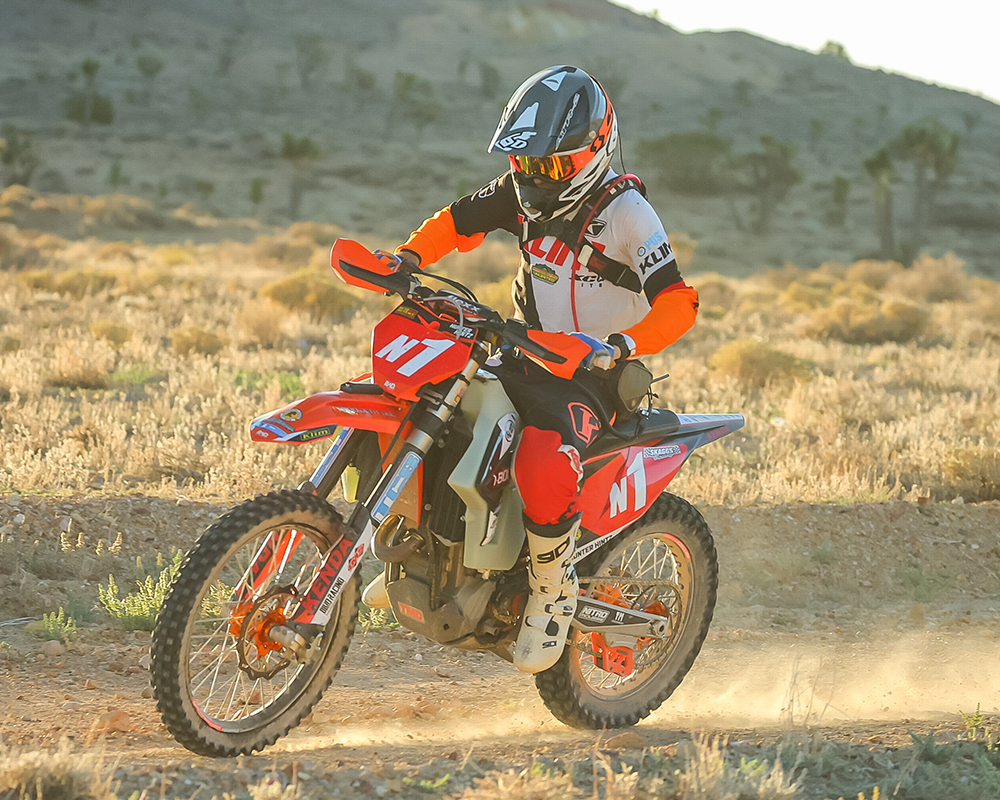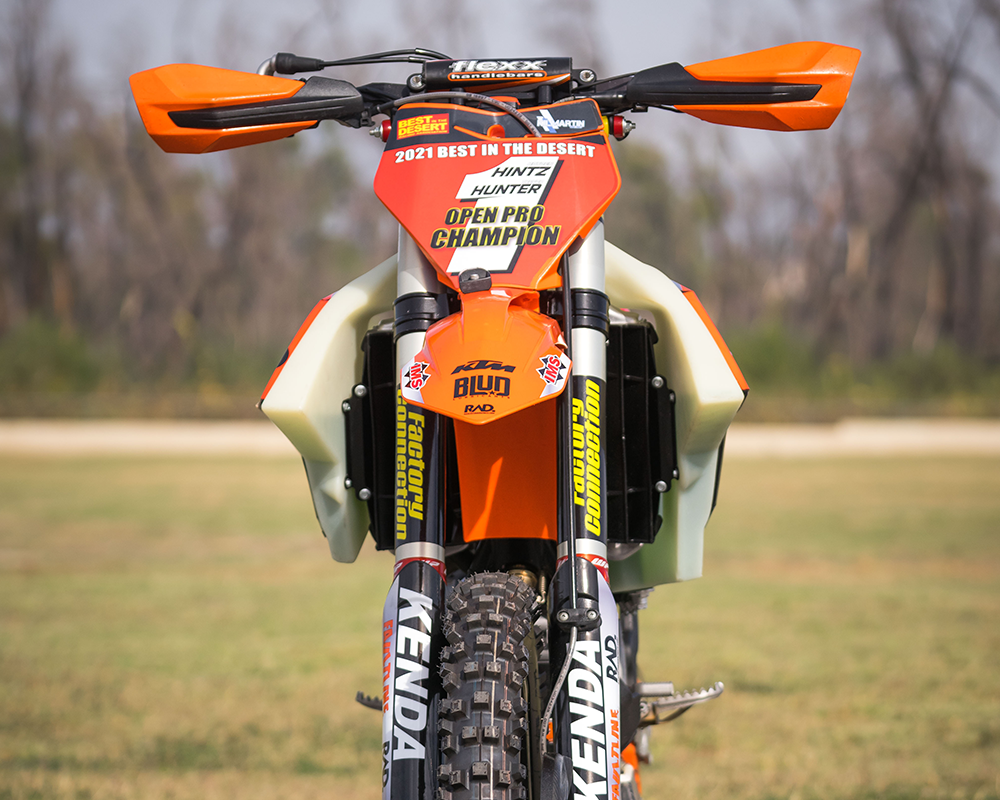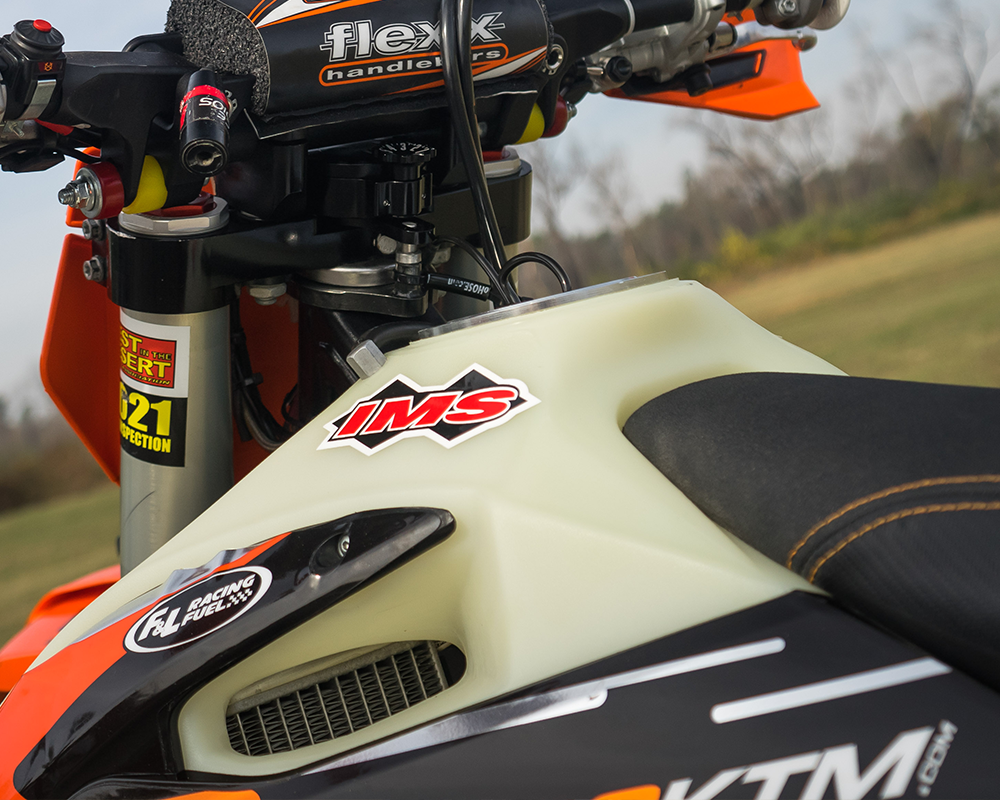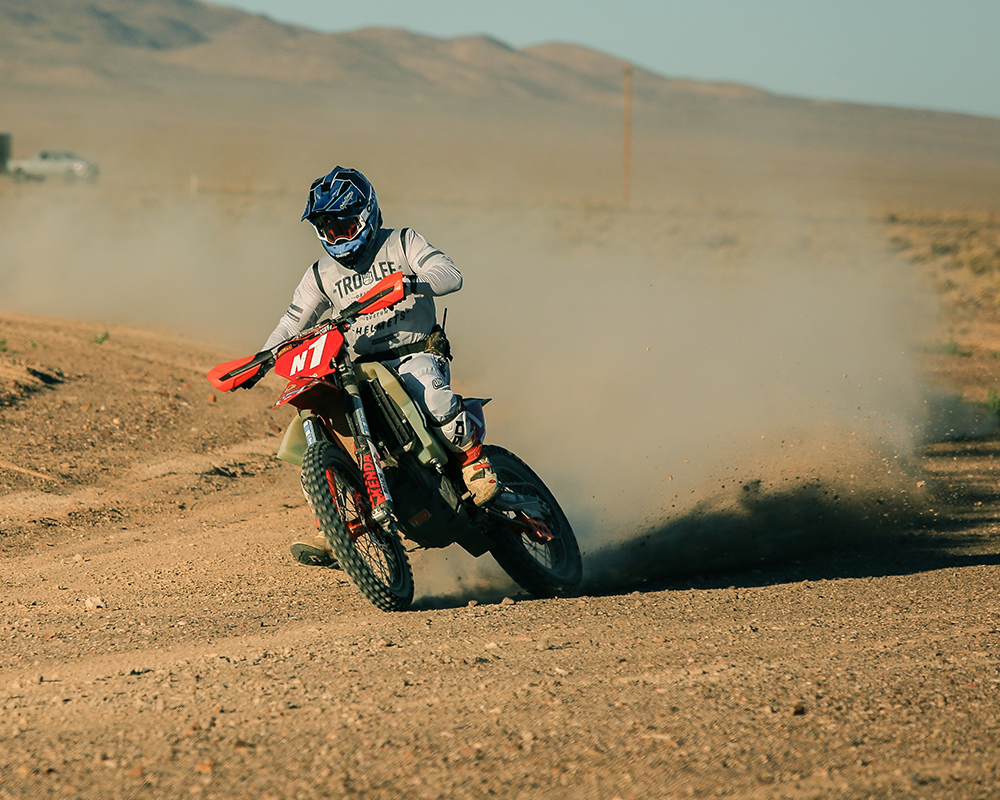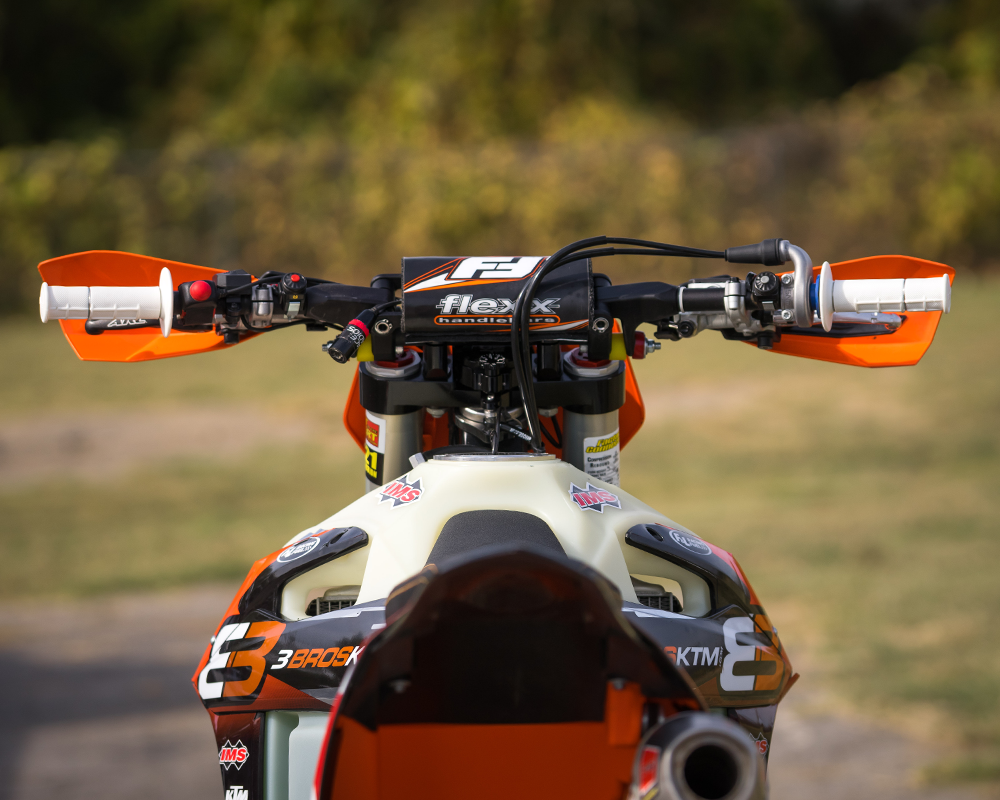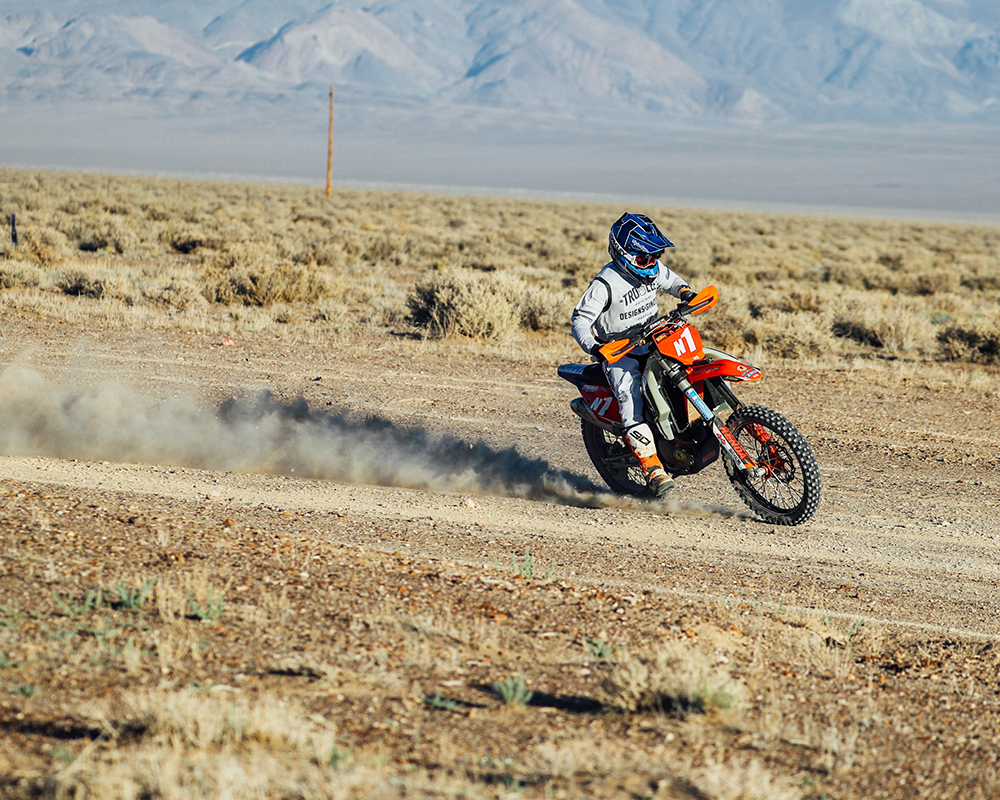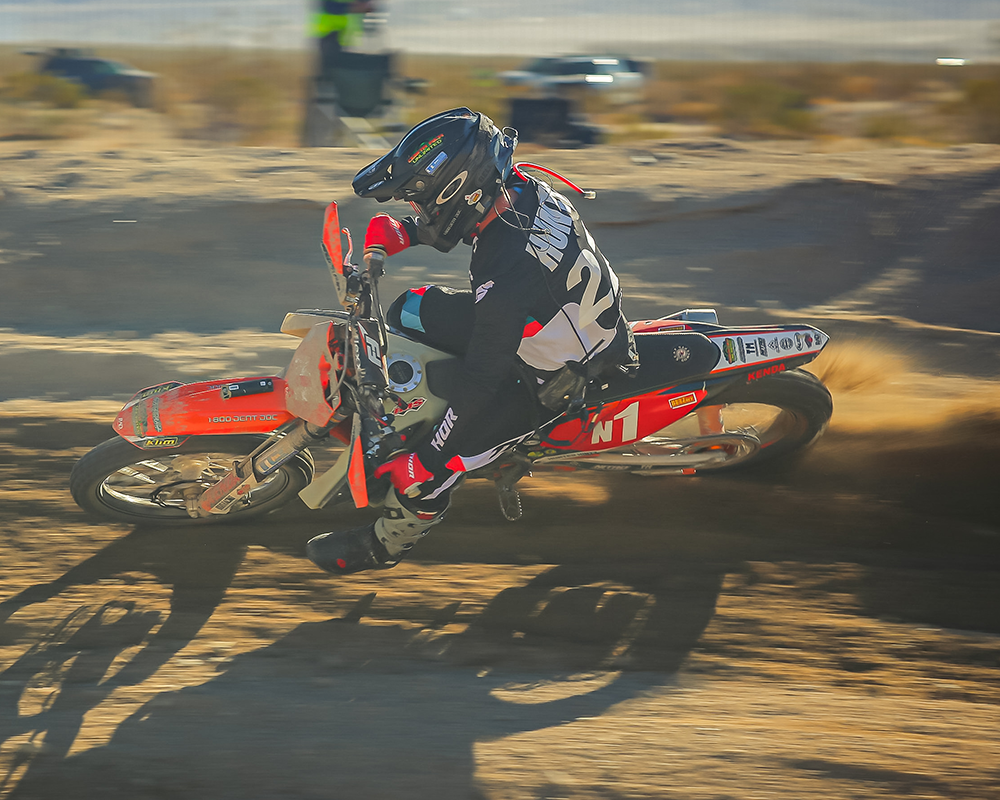IMS Products 4.5 Gallon Fuel Tank
Company: IMS
Price: $423.62
- Adds 1.5 gallons of fuel to the tank, not your body.
- Adds the fuel in a clean manner without any crazy obstrusions in the cockpit.
- Simple install.
- A more planted bike at high speeds.
- Bike feels/acts heavier with the tank.
- Wide between the knees.
What it is
- 4.5 Gallon Fuel Tank
- Available for KTM/Husqvarna models.
When you think off-road racing, oversized fuel tanks are usually a necessity. When you think oversized fuel tanks, IMS Products is referred to more often than not – for a reason. Most all of their tanks, especially those made in the last decade or so, are some of the cleanest, well thought out aftermarket tanks on the market. They try to resemble stock qualities where they can, minimizing width and height gains when all possible.
However, IMS went a little big with the newest Austrian machines and offers a hefty 4.5 Gallon option for those who like to maximize mileage. All IMS tanks are made of a polyethylene crosslink material that is implemented for extra strength and durability. This XL option extends over and past the radiator shrouds, as well as adds some extra material around and above the seat to reach the desired 4.5 gal capacity. The tank retails for $423.62, slightly more than the standard oversized tanks that are just under $400. It is available in Black and Natural colors, and in dry-break ready or screw cap variations.
How it works
- Bike feels more planted at high speeds but less nimble.
- Wider between the knees.
- Bolts on fairly simply with some minor radiator shroud trimming.
There’s no denying it – this gas tank is big. Like really big. The extra 1.5 gallons of capacity is apparent just holding it in your hands and most would think it’s a little too large. Bigger isn’t always better right? That’s not always the case…
First, you have to define what kind of riding you are doing and what your goals are. Are you riding tight singletrack and technical trails most of the time? Is the need to carry an exuberant amount of gas unnecessary? Well, this tank might not be the best for you.
However, if you ride a lot of roads and high speed terrain, or simply just need to carry more gas, this tank really doesn’t hurt performance as much as one would think. And in some cases, it actually helps. We’ve also seen this be a popular option with riders building lightweight adventure bikes, taking EXC type bikes and building them out for long haul trips and overnight rides. We have a lot of experience with this tank in both racing applications and in trail riding scenarios, and we found it has many positives in both domains.
With the way IMS designed this tank, you feel extra width between your knees primarily when you're sitting down. When you're standing up, you mostly don't travel up where the extra width is stored in the tank. However, once sitting down, your knees sitting promptly where it starts to get wide. Is it noticeable? Yes. Is it all that bad? No.
Simply put, the extra weight helps keep the bike very planted. When hitting rocks or edges at speed, the bike is far less reactive and deflective, rather it just plows through most anything in its way. Newer bikes, and the Austrian models in particular, are looking to minimize weight on paper which can lead to some disadvantages in the dirt. For instance, the ‘ol XR650R’s were applauded for their handling characteristics down in Baja and in the right circumstances. This tank brings some of those tendencies to a modern machine and helps settle it down when reaching triple digit speeds. The added weight and girth of the tank helps mellow the whole bike out in general, cutting down on some vibration and slowing the bike’s reaction time.
You also get a little more weight on the front end which can help traction in certain situations. On hard packed roads and sweeping corners, the little extra front end traction can go a long way. Obviously, the extra weight makes slowing down a little trickier. To avoid excessive pitching under braking and an unbalanced bike, we added some preload to the fork and even went up a spring rate in the forks to help balance out the bike and keep the front end up in the stroke.
The extra gas alone weighs about 9 lbs, plus adding a few for the extra plastic in the tank mold. One unique thing about this tank design is that when you get to a lower level of fuel (think less than a gallon), the tank carries the gas lower than any other tank does. This actually counteracts the heavy feeling, making the bike feel lighter with a lower center of gravity. However, you still don’t lose the wide feeling between your legs as that doesn’t change with gas consumption.
While this tank has a few key areas where it performs well, it also has its drawbacks in some situations as well. Without adjusting your bike setup, we found this tank doesn’t always like tight, technical, or sand. When you’re in the sand, the front end can dive, ride low in the stroke, and tends to want to push and plow instead of following through with the turn. Adjusting bike setup with a stiffer front end and more preload to keep the bike balanced helped a lot here.
In slower speed settings, the tank makes the bike feel more sluggish and less responsive, taking more effort to initiate turns and to control the bike. Likewise, the extra width from the tank becomes more apparent between your knees.
In a racing application, the bigger fuel tank has another purpose beyond its handling characteristics. Racing the BITD Series over the past few years, the extra fuel allowed us to skip pits, saving some time over the duration of the race while also offering a chance to make passes while others stopped to refuel. Many other top racers like Skyler Howes and Dalton Shirey have piloted similar tanks to Vegas To Reno and Silver State 300 triumphs in the past few years. In race conditions, we could comfortably reach 115-120 miles on a tank of fuel. In trail riding conditions, we found ourselves pushing the 180-200 mile mark with a splash of gas left in the tank.
IMS’ big 4.5 Gallon Fuel Tank is a unique product that might not appeal to the masses, but it has its target audience that can and does rely on it. The extra 1.5 gallons can go a long way if you’re down in Baja, trail riding in the remote where gas stops are few and far between, or even racing. Yes, it adds a significant amount of weight and width to the front half of the bike, but that can aid in handling when the speeds rise.
Leave a Reply
